Black & Cameron uses 96-camera rig on location in China for Land Rover
Shanghai production company Black & Cameron has used a specialist 96-camera rig on location across China in a new commercial for Land Rover. Supplied by multi-camera array specialist Splice Boys, the rig had not been used before outside a studio setting.
Filming took place over a three-month period, with Tao Wright as Executive Producer and Laura Geagea as Producer for Black & Cameron. The production involved driving from Shanghai to Dunhuang in central China, as well as Lhasa, in the Tibet Autonomous Region of China, and Shangri-La, not far from the Tibetan border. As well as being popular tourist regions, each location offered different driving conditions where the Land Rover could be put through its paces.
Despite extensive pre-planning the realities of terrain and local weather conditions meant that last-minute changes and improvisations were constantly needed.
Carol Le is in charge of PR and Marketing for Black & Cameron: “They are very famous cities in China [and] every year lots of tourists from all over the world go to visit. Secondly, these three cities have special geomorphology which is good for their VIP clients to try their products.
“[Land Rover] invites a team of drivers [to test] their new product Discover 4 from Hangzhou to Shangri-La, to Lhasa [and] to Dunhuang ... it means you will see all different road conditions.”
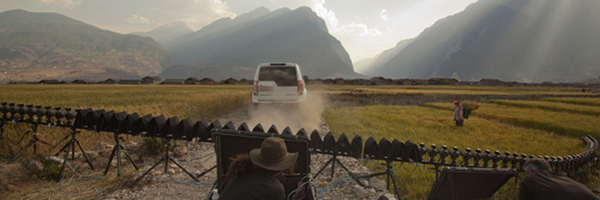 Tom Brandon and Richard Kendall run Splice Boys: “We use a multi-camera array to capture our shots. The rig works by using up to 96 DSLR (Digital Single Lens Reflex) cameras and firing them either in sync or progressively. The resulting still images make a video sequence. With a rig of this nature the devil is in the detail; there are a huge amount of factors that must be considered for every shot.”
Tom Brandon and Richard Kendall run Splice Boys: “We use a multi-camera array to capture our shots. The rig works by using up to 96 DSLR (Digital Single Lens Reflex) cameras and firing them either in sync or progressively. The resulting still images make a video sequence. With a rig of this nature the devil is in the detail; there are a huge amount of factors that must be considered for every shot.”
These details include factoring in the shape of the rig for a specific shot and how far the cameras are from the subject, while lighting also becomes much more challenging. All these elements impact on the camera movement and the logistics of programming so many different lenses.
Some of the scenes were filmed at high altitudes, with set-ups actually taking place in blizzard conditions in four feet of snow.
Despite extensive pre-planning the realities of terrain and local weather conditions meant that last-minute changes and improvisations were constantly needed. The rig itself takes time to set up in tricky locations, but its adaptability and modular, sectionalised design means adjustments are relatively straightforward.
Brandon and Kendall comment: “We often encountered drastic changes in weather or even terrain, with creeks overflowing, snow melting or falling. These meant we often had to adapt our plans to suit.”
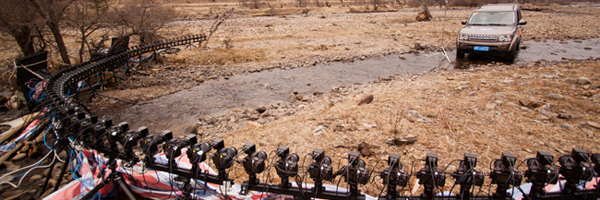 Efforts to waterproof the equipment were mostly successful, although they lost two PCs to water damage over the course of the three-month shoot. Some of the scenes were filmed at high altitudes, with set-ups actually taking place in blizzard conditions in four feet of snow.
Efforts to waterproof the equipment were mostly successful, although they lost two PCs to water damage over the course of the three-month shoot. Some of the scenes were filmed at high altitudes, with set-ups actually taking place in blizzard conditions in four feet of snow.
Brandon and Kendall add: “We set up on snow in -15 Degrees Celsius, and we got many problems as the conductivity of our cables was deadened by the cold. Lighting and set-up time also provided a big challenge.
“The rig takes a minimum of four hours to set up and then often we had only a small window of time to get the shot at magic hour or sunrise; maybe 15 minutes.”
It seems filmmakers now generally favour multiple-camera rigs in much smaller doses combined with advanced digital effects.
Splice Boys say the technology they use has actually been around for some 30 years, although it wasn’t until 1999 that an earlier version of their rig was given global exposure for seminal action film The Matrix. The multiple-camera rig delivered groundbreaking visuals and the film had a seismic impact on the film industry, although the multiple-camera rig fell out of fashion within a few short years.
The technology spread to commercials too, but it seems filmmakers now generally favour multiple-camera rigs in much smaller doses combined with advanced digital effects. Computer-generated imagery can often produce a similar result more cheaply and efficiently.
Brandon and Kendall conclude: “What has evolved more recently is digital technology and processing power, so this has expanded the possibilities and flexibility on many levels of production and imaging. Our triggering system is also more complex [than the system used on The Matrix].
“We are a new company. Our main projects will be in the commercial world, but we are also working on many art and R&D projects. We want to really explore the full potential of this type of rig.”
Click here to watch the rig being set up.
Related Posts
- Samsara: Filming a 65mm visual epic on location across 25 countries
- Filming the Beijing Olympics
- Drone filming & the freedom of unmanned flight
- TLG talks to Location Manager Carl Wood
- China Film Studio uses Lightcraft Technology for virtual production stage
- The Canyons – a filming survival guide
- Filming on location in China with Michael McDermott of Gung-Ho Films
- TLG talks to legendary film pilot Marc Wolff
Related posts:
Comments
Not Logged in
You must be logged in to post a comment
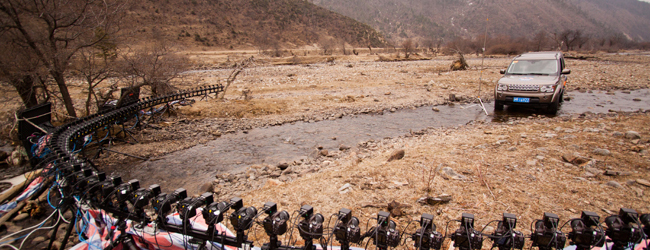
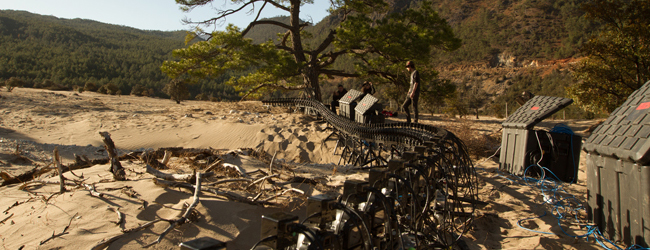
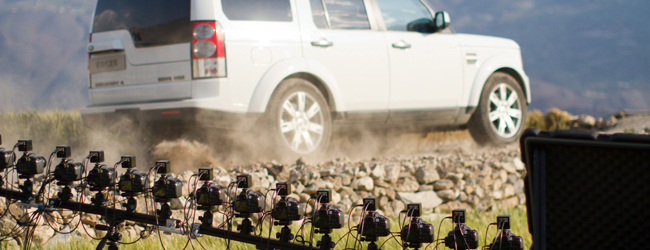
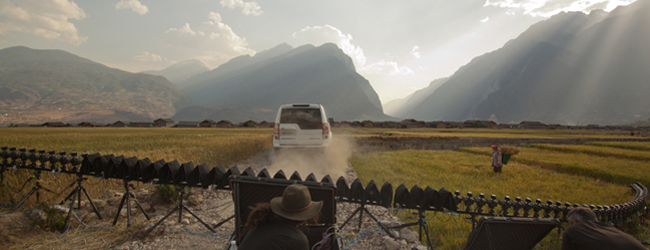
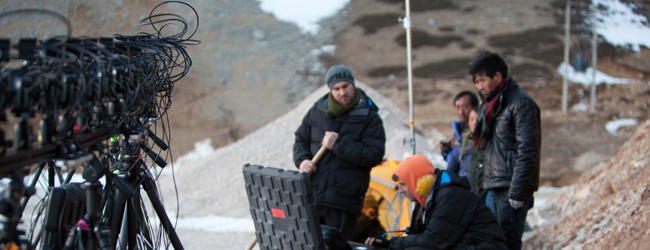
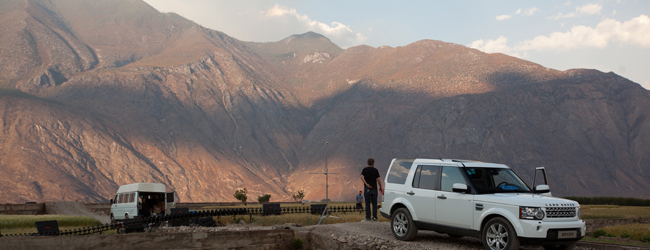
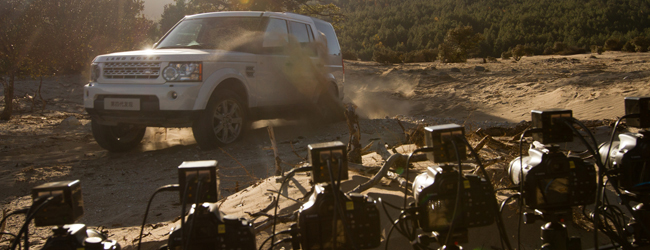
There are 1 comments
Bill Bowling
| #
Extraordinary. Where can we see examples of finished productions?
Reply